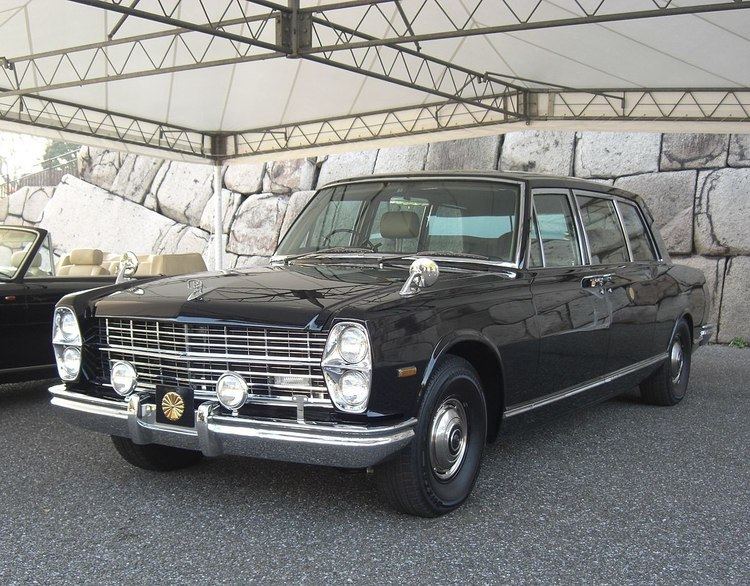Manufacturer PrinceNissan | Production 1966–19678 produced Designer Norihiko Mori Layout FR layout | |
 | ||
The Nissan Prince Royal is a limousine made for the Imperial Household of Japan.
History
The Japanese auto industry was expanding rapidly in the early 1960s, and the Imperial Household Agency sought a Japanese auto manufacturer to produce a suitable car for the Emperor of Japan. In September 1965, the Prince Motor Company announced that they would be providing two vehicles for the Emperor. The first would be ready by 1966, the other by 1967. In May 1966, Prince Motor Co. merged with Nissan Motor Co., and so Nissan was added to the name of the car. The Prince Motor Company had an established relationship with the Imperial Household Agency previously, when they presented the first Prince Gloria to Crown Prince Akihito as a one-year anniversary wedding gift, and an earlier gift to the Crown Prince called the Prince Sedan in 1954. The Prince Royal was the second Japanese built post-war vehicle to use a V8 engine; the first was the Toyota Crown Eight in 1964.
Because of the massive weight, a 6,437 cc (391 ci) Prince series W64 V8 with overhead valves, producing 260 PS (191.2 kW; 256.4 bhp) was used along with custom 8.90-15 Bridgestone tyres. Front independent double wishbone coil suspension, with leaf springs in the rear. Drum brakes were used with power assist. A three-speed GM Super Turbine 400 (THM400) automatic transmission is used, with the gear selector installed on the steering column. An American built transmission was used for expediency, in that Japanese manufacturers had not yet developed a transmission capable of coping with the torque from the Prince built V8 engine.
When the Emperor is riding inside, the Imperial Standard, known as the Imperial Seal of Japan is displayed at both the front and rear of the car in place of a license plate, and on the exterior of both rear passenger doors, displaying a 16 petal chrysanthemum, in golden colour, in reference to the Chrysanthemum Throne of Japan.
The vehicle has coach doors for the center-rear that open with a wider angle. Interior features a total of eight passenger seats. There are three rows of seats. The two center rear seats are folding type for security personnel. In between the center seats is a beverage bar. The rear seats were covered in supple 100% wool upholstery, while the driver has leather seats. The windows have curtains and double pane glass, allowing the passenger compartment to be pressurized for additional security protection. A telephone is used to communicate to the driver.
The vehicles were retired on July 7, 2006, when the Toyota Century Royal was presented for service to replace them. Previous vehicles used to transport previous Emperors were a Rolls-Royce Phantom V used in the 1960s which replaced the Mercedes-Benz 770s that were used from the 1930s.
